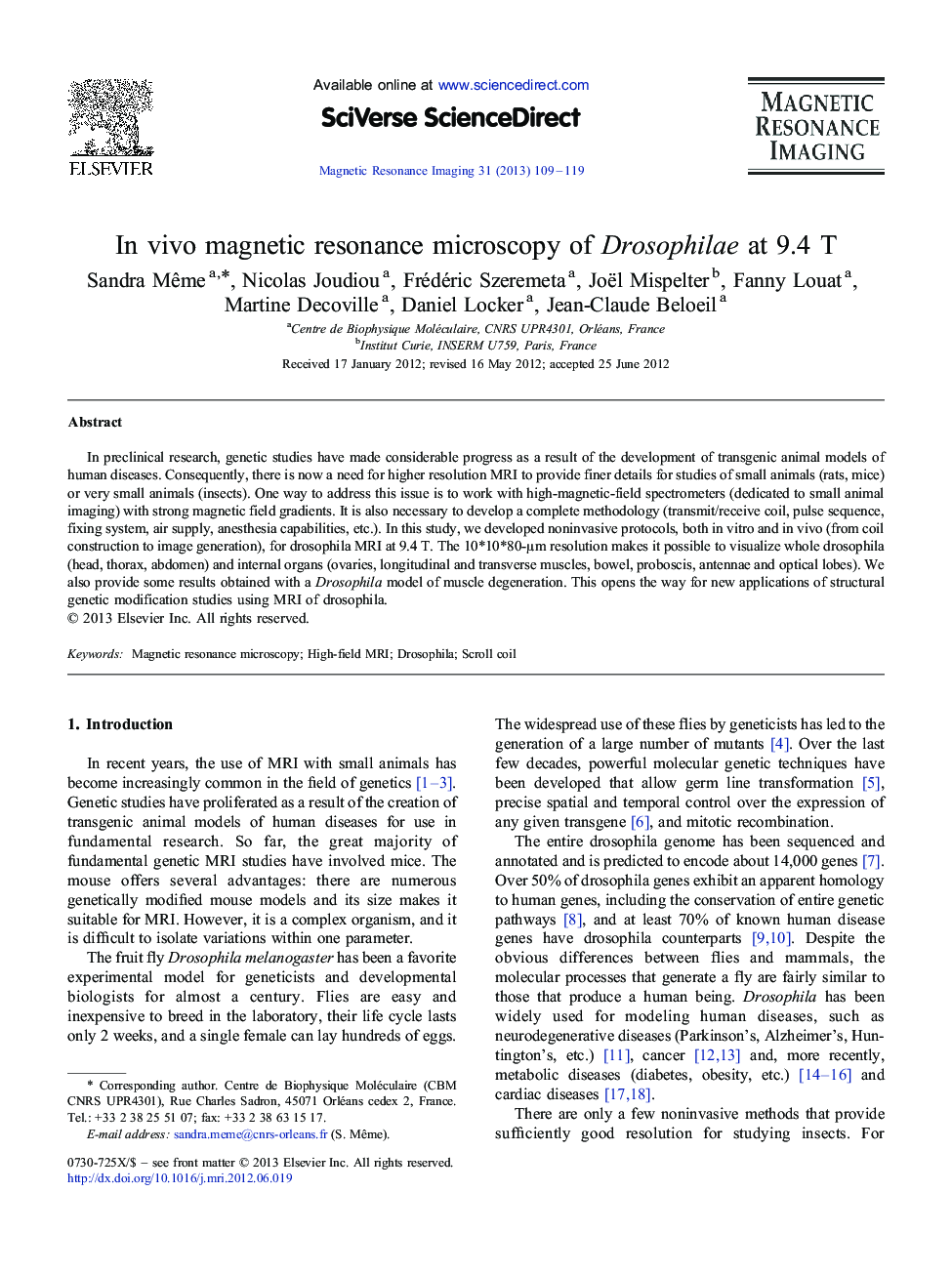| Article ID | Journal | Published Year | Pages | File Type |
|---|---|---|---|---|
| 1806754 | Magnetic Resonance Imaging | 2013 | 11 Pages |
In preclinical research, genetic studies have made considerable progress as a result of the development of transgenic animal models of human diseases. Consequently, there is now a need for higher resolution MRI to provide finer details for studies of small animals (rats, mice) or very small animals (insects). One way to address this issue is to work with high-magnetic-field spectrometers (dedicated to small animal imaging) with strong magnetic field gradients. It is also necessary to develop a complete methodology (transmit/receive coil, pulse sequence, fixing system, air supply, anesthesia capabilities, etc.). In this study, we developed noninvasive protocols, both in vitro and in vivo (from coil construction to image generation), for drosophila MRI at 9.4 T. The 10*10*80-μm resolution makes it possible to visualize whole drosophila (head, thorax, abdomen) and internal organs (ovaries, longitudinal and transverse muscles, bowel, proboscis, antennae and optical lobes). We also provide some results obtained with a Drosophila model of muscle degeneration. This opens the way for new applications of structural genetic modification studies using MRI of drosophila.
